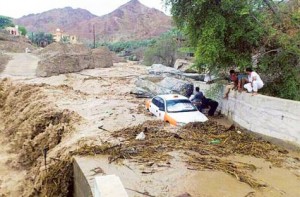

- #Directorate general of meteorology and air navigation oman how to
- #Directorate general of meteorology and air navigation oman free
The RSGISRC at Sultan Qaboos University supports teaching and research activities within the university, and also acts as a national resource, providing strategic service, consultancy and training, and promoting international collaboration in the field. The Center is coordinated by PACA and the SQU Remote Sensing and GIS Research Center. The 7th World Meteorological Organization (WMO) Center of Excellence (CoE), Muscat, was inaugurated at SQU in February 2006. A Director for the Center was appointed in August 2002. the Vice-Chancellor issued Administrative Order No.741 which established a Remote Sensing Committee in the University and defined its duties and responsibilities. The need to establish a Remote Sensing Centre within the Sultan Qaboos University (SQU) was recognized more than one and half decades ago when on the 25 December 1988 H.E. GIS entails database analysis, description, explanation, pattern prediction and processes at geographic scales.
#Directorate general of meteorology and air navigation oman how to
A major challenge to users of remote sensing is how to match the appropriate technology to the problem at hand. The spectrum of remote sensing technology, however, is broad and invariably requires careful tailoring of response to the problem. Remote sensing which involves the use of satellite imagery continues to be an integral part of projects dealing with mineral and petroleum exploration, pollution detection, weather prediction, commercial fishing, rangeland monitoring, crop forecasting, urban development and management studies and many more. Remote Sensing and Geographic Information Systems (GIS) have emerged as invaluable technologies for ecosystem analysis, evaluation and monitoring.

#Directorate general of meteorology and air navigation oman free
Madayn Research Chair for the Development of Industrial Estates and Free zones.UNESCO Research Chair on Ophiolite Studies.India, Indonesia, Kenya, Malaysia, Reunion Island, Sri Lanka, Thailand and Myanmar all issued alerts or evacuation orders which were later lifted.

Yesterday"s quake was felt as far afield as Thailand, where skyscrapers in the capital Bangkok swayed. Panicky residents poured into the streets of Banda Aceh, which was near the epicentre of a 9.1-magnitude quake in 2004 that unleashed an Indian Ocean tsunami that killed 220,000 people including 170,000 in Aceh province. The 8.6-magnitude quake hit 431 km off the city of Banda Aceh at 0838 GMT, and was followed by another undersea quake measured at 8.2. The IOTWAS system consists of enhanced seismographic networks, networks of real-time sea-level gauges and deep-sea ocean pressure sensors, along with national tsunami warning centres linked to national disaster management systems. In the wake of the disaster, Oman’s government vowed steps to establish an early warning system integrated with a wider pan-regional network.Īs with other countries covered by the Indian Ocean Tsunami Warning and Mitigation System (IOTWAS), Oman’s national capability is being developed with assistance from Unesco’s Intergovernmental Oceanographic Commission (IOC). The Sultanate was largely spared by that 2004 killer tsunami, although giant waves battered some parts of the coastline. The basin-wide early warning system was set up under the auspices of Unesco in the wake of the deadly 2004 tsunami that killed over 230,000 people and affected coastal communities in nearly 12 Asian countries. The system is proposed to be hooked up to the Indian Ocean and Japanese tsunami early warning networks currently in operation.Īround 28 countries of the Indian Ocean rim, including the Sultanate of Oman, are covered by the Indian Ocean Tsunami Warning and Mitigation System (IOTWAS). SQU’s Earthquake Monitoring Centre will be an integral part of the Tsunami Early Warning System, which is proposed to feature, among other things, a major network of tidal gauges at key points off the Sultanate’s lengthy coastline. Development of the system is being overseen by the Directorate-General of Meteorology and Air Navigation. Oman’s Tsunami Early Warning System, decreed by His Majesty following the 2004 Indian Ocean tsunami, is under development, and is likely to be operational only next year, says Dr Issa el Hussein, Director of the Earthquake Monitoring Centre of Sultan Qaboos University.


 0 kommentar(er)
0 kommentar(er)
